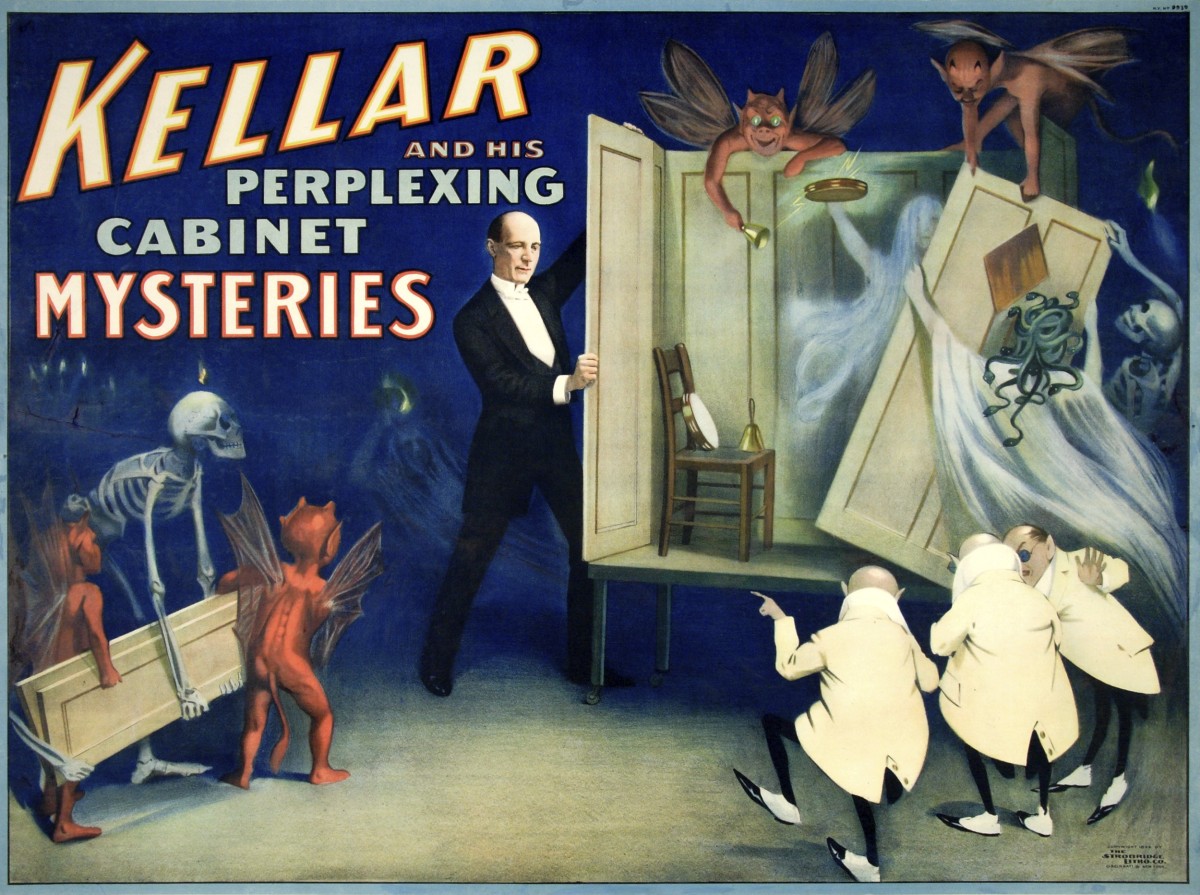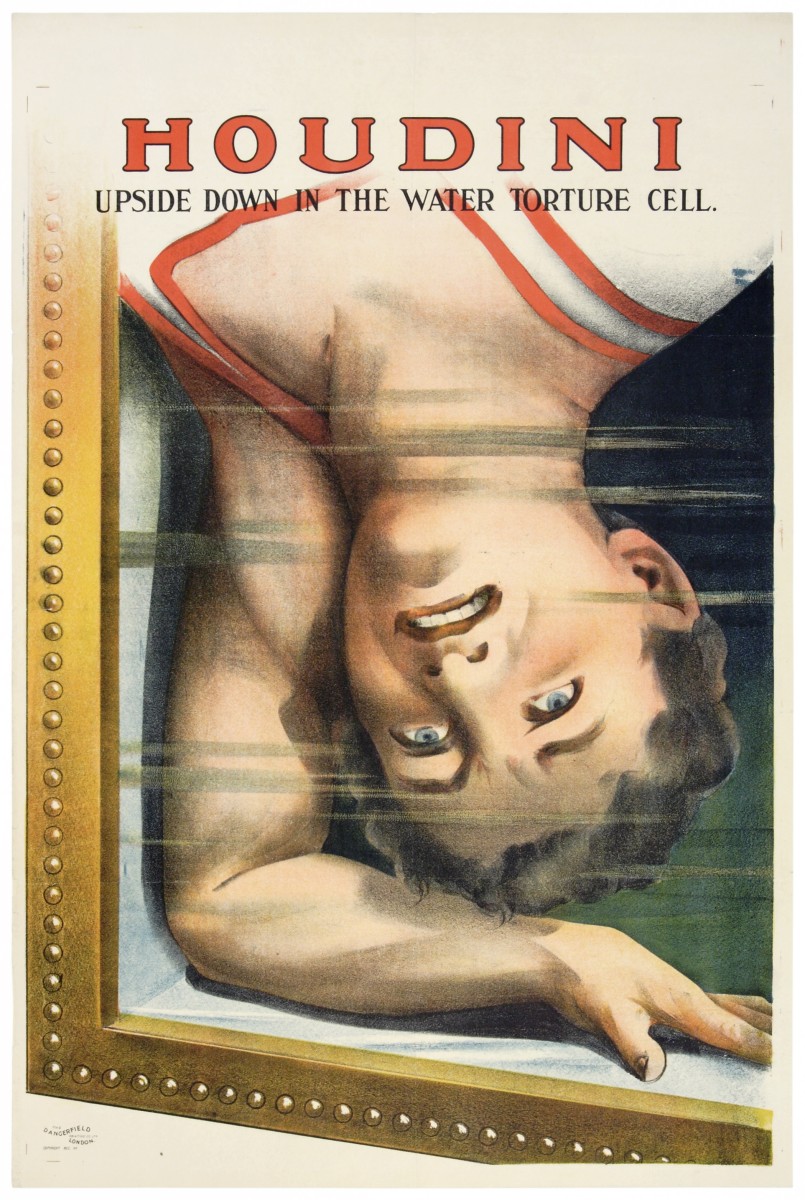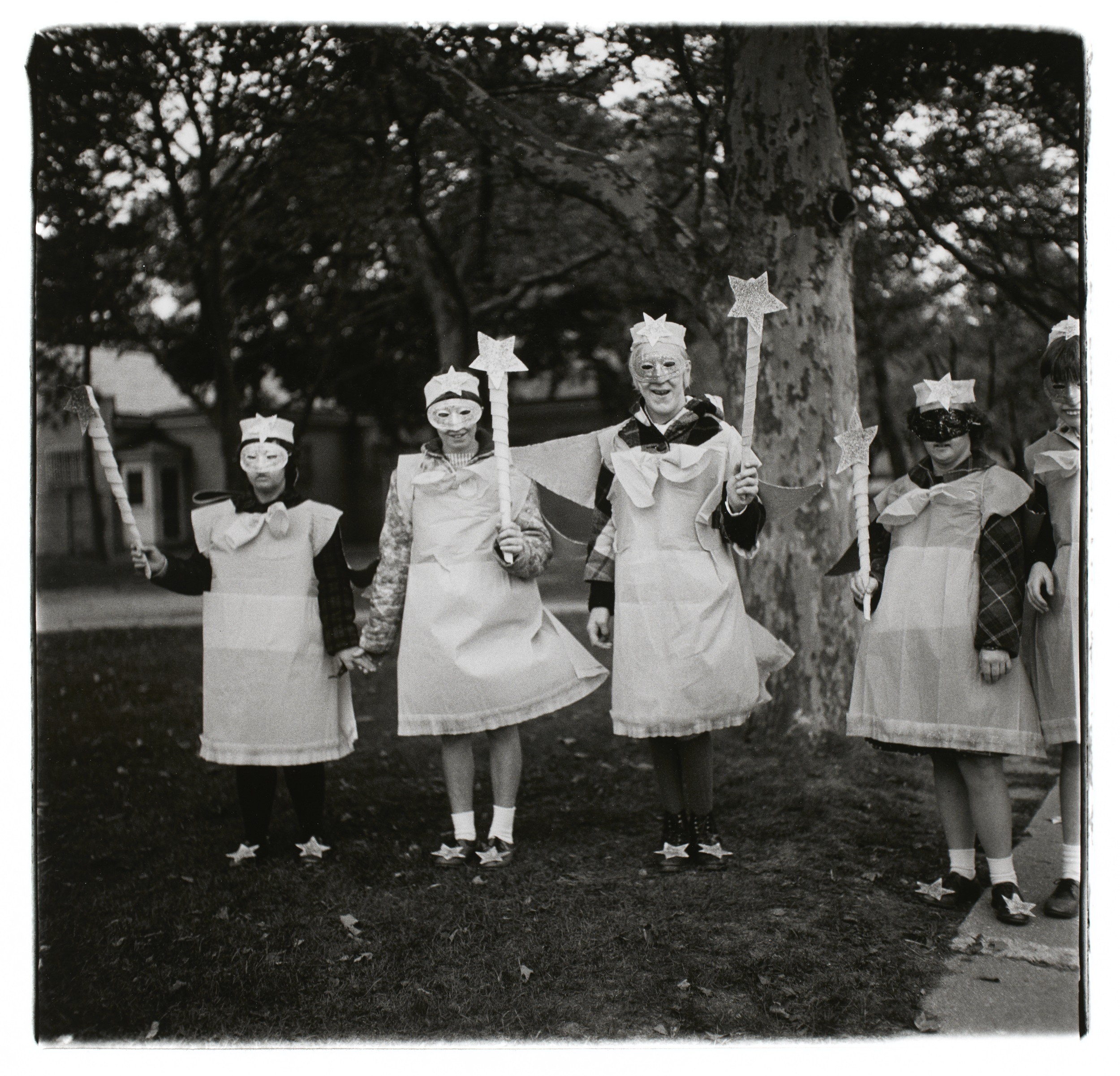Artful praise
With only a few days left to see Diane Arbus Photographs, 1956–1971 and Illusions: The Art of Magic, we take a look back at the headlines to see what we have learned from these artists.

Strobridge Lithographing Company, Kellar and His Perplexing Cabinet Mysteries, 1894, 19th century, 71.7 x 96.7 cm. Purchase, funds graciously donated by La Fondation Emmanuelle Gattuso. M2014.128.301. © McCord Museum.
In February 2020, the AGO opened two very different exhibitions from two very different moments in time – an incredible display of portraiture by the late American photographer Diane Arbus and a selection of magic posters from the world-class Allan Slaight Collection of the McCord Museum. Both exhibitions were scheduled to be on view through late May – but only weeks into their run were they closed due to the COVID-19 pandemic.
We reopened safely and slowly in July. Both exhibitions were extended until November 8, offering visitors a welcome respite during these unprecedented times. Now, as we reach the end of both exhibitions, we recall the lessons they have taught us, straight from the headlines.
The career of Harry Houdini is a lesson in brand marketing. Once one of the “ most famous people in the world”, the Hungarian-American performer was a touring magician, an author and a silent film star. And as the Toronto Star reminded us, “his fame didn’t end with his death on Halloween 1926 from 'traumatic appendicitis' — believed to be caused by punches to the stomach he received from a student in Montreal.” Thanks to his own incredible powers of self-promotion, he transformed magic in the 20th century.
The magic ceiling was real, and the unsung heroines of the Golden Age of Magic deserve your attention. Smithsonian Magazine paid homage to the women who succeeded in their own right to gain international fame. “Adelaide wore pants and a white blouse on stage, levitated and decapitated female assistants, and caught bullets with her bare hands,” wrote Brigit Katz. “Audiences in North America and Europe loved her, and she toured major vaudeville circuits until she was in her seventies.”
How better to reflect on this present moment than by looking back through the eyes of someone who 50 years ago set out to capture “American rites, manners and customs.”
"She was", wrote Nadja Sayej in Forbes, "a photographer who went where many feared to tread, the underground.”
“Today” reflected Kate Taylor in The Globe and Mail, “in an era more comfortable with non-conforming identities and more cautious about discrimination, many of these photographs read as prescient and empathetic…Arbus’s work was central to photography’s emergence as high art in the second half of the 20th century.”
Writing in the National Post, Richard Warnica mused on what Diane Arbus herself might have taken from the pandemic, saying “her best pictures implicate the viewer, too. Her subjects stare out of the frame. They gawk back. That’s part of why there’s such strange resonance in seeing the exhibition now, masked, in a room with other masked strangers. As you’re looking, you feel looked at. It’s impossible not to wonder what Arbus might have seen.”
Admission to Diane Arbus: Photographs, 1956–1971 and Illusions: The Art of Magic is free for AGO Members, AGO Annual Pass holders and visitors aged 25 and under. All visitors must book a timed-entry ticket online at AGO.ca before entering the Gallery.
Are you an AGOinsider yet? If not, sign up to have stories like these delivered straight to your inbox every week.


